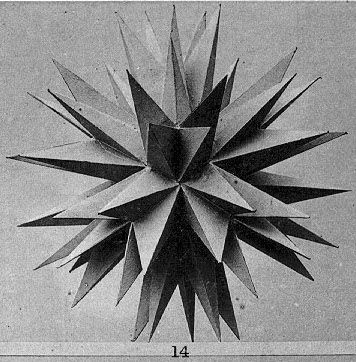Max Brückner on:
[Wikipedia]
[Google]
[Amazon]
 Johannes Max Brückner (5 August 1860 – 1 November 1934) was a German geometer, known for his collection of polyhedral models.
Johannes Max Brückner (5 August 1860 – 1 November 1934) was a German geometer, known for his collection of polyhedral models.
Education and career
Brückner was born in Hartau, in theKingdom of Saxony
The Kingdom of Saxony () was a German monarchy in Central Europe between 1806 and 1918, the successor of the Electorate of Saxony. It joined the Confederation of the Rhine after the dissolution of the Holy Roman Empire, later joining the German ...
, a town that is now part of Zittau
Zittau (; ; ; ; ; Lusatian dialects, Upper Lusatian dialect: ''Sitte''; ) is the southeasternmost city in the Germany, German state of Saxony, and belongs to the Görlitz (district), district of Görlitz, Germany's easternmost Districts of Germ ...
, Germany
Germany, officially the Federal Republic of Germany, is a country in Central Europe. It lies between the Baltic Sea and the North Sea to the north and the Alps to the south. Its sixteen States of Germany, constituent states have a total popu ...
. He completed a Ph.D. at Leipzig University
Leipzig University (), in Leipzig in Saxony, Germany, is one of the world's oldest universities and the second-oldest university (by consecutive years of existence) in Germany. The university was founded on 2 December 1409 by Frederick I, Electo ...
in 1886, supervised by Felix Klein
Felix Christian Klein (; ; 25 April 1849 – 22 June 1925) was a German mathematician and Mathematics education, mathematics educator, known for his work in group theory, complex analysis, non-Euclidean geometry, and the associations betwe ...
and Wilhelm Scheibner, with a dissertation concerning conformal map
In mathematics, a conformal map is a function (mathematics), function that locally preserves angles, but not necessarily lengths.
More formally, let U and V be open subsets of \mathbb^n. A function f:U\to V is called conformal (or angle-prese ...
s. After teaching at a grammar school in Zwickau
Zwickau (; ) is the fourth-largest city of Saxony, Germany, after Leipzig, Dresden and Chemnitz, with around 88,000 inhabitants,.
The West Saxon city is situated in the valley of the Zwickau Mulde (German: ''Zwickauer Mulde''; progression: ), ...
, he moved to the gymnasium in Bautzen
Bautzen () or Budyšin (), until 1868 ''Budissin'' in German, is a town in eastern Saxony, Germany, and the administrative centre of the Bautzen (district), district of Bautzen. It is located on the Spree (river), Spree river, is the eighth most ...
.
Brückner is known for making many geometric models, particularly of stellated and uniform polyhedra
In geometry, a uniform polyhedron has regular polygons as faces and is vertex-transitive—there is an isometry mapping any vertex onto any other. It follows that all vertices are congruent. Uniform polyhedra may be regular (if also fac ...
, which he documented in his book ''Vielecke und Vielflache: Theorie und Geschichte'' (''Polygons and polyhedra: Theory and History'', Leipzig: B. G. Teubner, 1900). The shapes first studied in this book include the final stellation of the icosahedron
In geometry, the complete or final stellation of the icosahedron is the outermost stellation of the icosahedron, and is "complete" and "final" because it includes all of the cells in the icosahedron's stellation diagram. That is, every three int ...
and the compound of three octahedra, made famous by M. C. Escher
Maurits Cornelis Escher (; ; 17 June 1898 – 27 March 1972) was a Dutch graphic artist who made woodcuts, lithography, lithographs, and mezzotints, many of which were Mathematics and art, inspired by mathematics.
Despite wide popular int ...
's print ''Stars''.
Joseph Malkevitch lists the publication of this book, which documented all that was known on polyhedra at the time, as one of 25 milestones in the history of polyhedra. Malkevitch writes that the book's "beautiful pictures of uniform polyhedra ... served as an inspiration to people later".
Brückner died on November 1, 1934, in Bautzen
Bautzen () or Budyšin (), until 1868 ''Budissin'' in German, is a town in eastern Saxony, Germany, and the administrative centre of the Bautzen (district), district of Bautzen. It is located on the Spree (river), Spree river, is the eighth most ...
.
Honors and awards
Brückner was aninvited speaker at the International Congress of Mathematicians
An invitation system is a method of encouraging people to join an organization, such as a Club (organization), club or a website. In regular society, it refers to any system whereby new members are chosen; they cannot simply apply. In relation to w ...
in 1904, 1908, 1912, and 1928.. In 1930–1931 he donated his model collection to Heidelberg University
Heidelberg University, officially the Ruprecht Karl University of Heidelberg (; ), is a public research university in Heidelberg, Baden-Württemberg, Germany. Founded in 1386 on instruction of Pope Urban VI, Heidelberg is Germany's oldest unive ...
, and the university in turn gave him an honorary doctorate in 1931.
Bibliography
* Die Elemente der vierdimensionalen Geometrie mit besonderer Berücksichtigung der Polytope, Jahresbericht des Vereins für Naturkunde zu Zwickau 1893 * Vielecke und Vielflache – Theorie und Geschichte, Teubner, Leipzig, 1900 * Über die gleicheckig-gleichflächigen, diskontinuierlichen und nichtkonvexen Polyeder. dans: Abhandlungen der kaiserlichen leopoldinisch-carolinischen deutschen Akademie der Naturforscher, vol. 86, p. 1–348, Halle 1906. * Ueber die Ableitung der allgemeinen Polytope und die nach Isomorphismus verschiedenen Typen der allgemeinen Achtzelle (Oktatope), Verhandelingen der Koninklijke Akademie van Wetenschappen, Amsterdam 1909References
{{DEFAULTSORT:Brueckner, Johannes Max 1860 births 1934 deaths 19th-century German mathematicians German geometers Leipzig University alumni 20th-century German mathematicians Heidelberg University alumni People from Zittau People from the Kingdom of Saxony Mathematicians from the German Empire